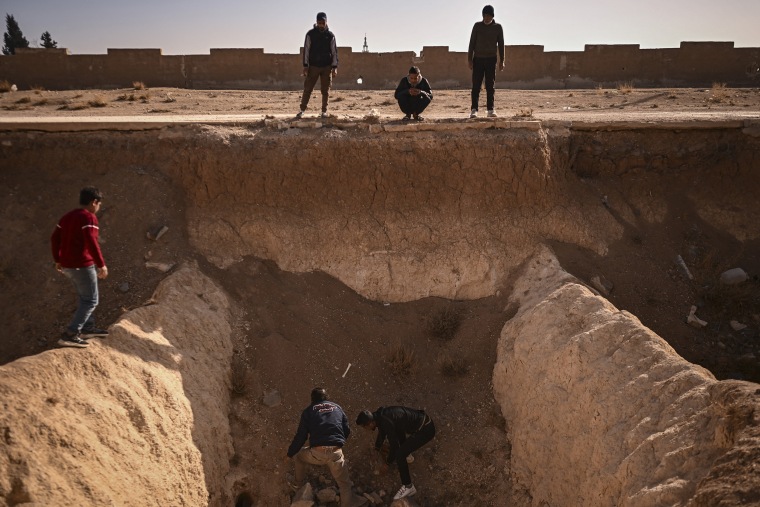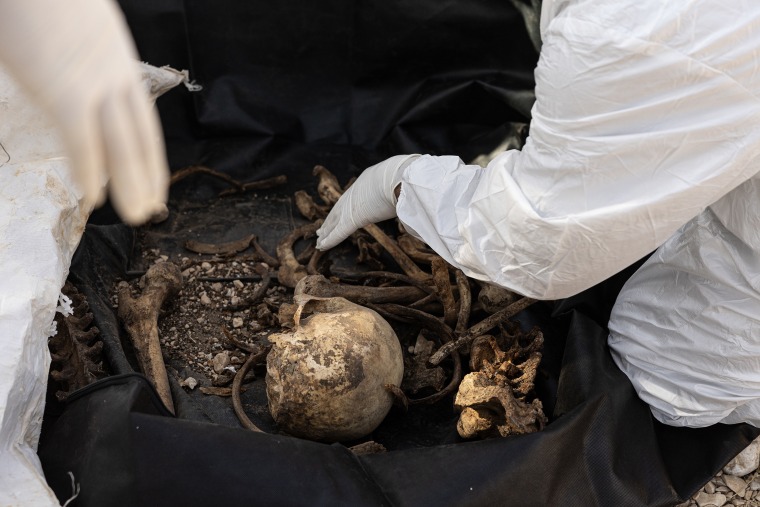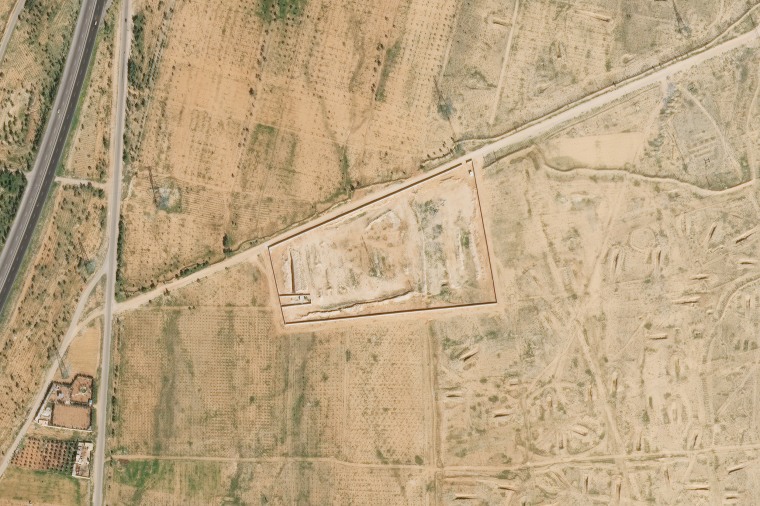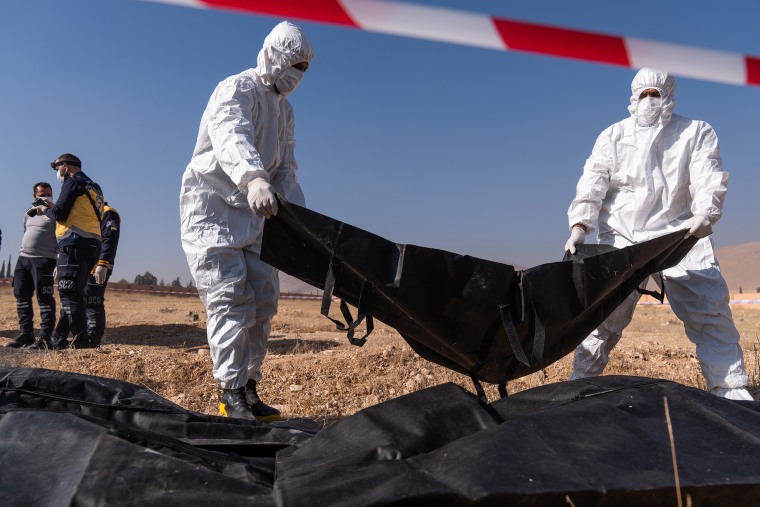Mass graves uncovered in Syria in the days since President Bashar al-Assad was overthrown are exposing evidence of some of the worst abuses since the Nazis, a top international war crimes prosecutor said.
More than 100,000 people were tortured and killed in the state-run “machinery of death,” Stephen Rapp, former U.S. war crimes ambassador at large, told Reuters on Tuesday after visiting two mass grave sites in the towns of Qutayfah and Najha near Damascus.
“I don’t have much doubt about those kinds of numbers given what we’ve seen in these mass graves," said Rapp, who led prosecutions at both the Rwanda and Sierra Leone war crimes tribunals and is now working to help document evidence of war crimes in Syria.
Rapp, who also spoke to BBC News, did not immediately respond to a request for comment.
Images have emerged showing Syrian Civil Defense crews, known as the White Helmets, recovering the remains of those buried in some of the country's mass graves, with some photos showing piles of bones and skulls in body bags. Past satellite imagery has also indicated large burial sites.


Hundreds of thousands of political prisoners disappeared into Assad's network of prisons, where many faced torture and death, in the years since the civil war in Syria began in 2011 with his brutal crackdown on protests against him. Both he and his father, Hafez al-Assad, who died in 2000, have been accused of widespread killings and abuses.
And while Syrians across the country celebrated as thousands of people were freed from prison cells by rebel forces within hours of Assad's overthrow, the search is on for those who did not survive to see the end of the Assad family's 50-year rule.
'System of state terror'
“We really haven’t seen anything quite like this since the Nazis,” Rapp said of the evidence emerging from the mass graves.
“From the secret police who disappeared people from their streets and homes, to the jailers and interrogators who starved and tortured them to death, to the truck drivers and bulldozer drivers who hid their bodies, thousands of people were working in this system of killing,” he said.
“We are talking about a system of state terror, which became a machinery of death," Rapp said.

Assad, now in Russia, has repeatedly denied accusations from human rights groups, whistleblowers and former detainees that his regime carried out human rights violations.
The horrors of Syria's mass graves were previously described in German court hearings and U.S. congressional testimony in 2021 and 2023, with past satellite imagery released by Maxar Technologies, a U.S. defense contractor, showing a location being investigated as a possible mass grave.
The International Commission on Missing Persons in The Hague said it has received reports of at least 66 sites of mass graves in Syria.
Working with Syrian families of the missing and Syrian organizations, it said in a news release Dec. 10 that it had also collected reports of at least 28,200 missing relatives from more than 76,200 people from Syria.

The commission has emphasized the importance of protecting evidence that will demonstrate the circumstances under which people were detained — and killed — under the Assad regime "for justice to prevail in Syria."
Syria's de facto rebel leadership has vowed to bring members of the Assad regime to justice, but with the ousted dictator having fled to Russia, it is unclear how or when he might be tried since Moscow is not party to the International Criminal Court and neither is Syria.
State Department spokesperson Matthew Miller said at a news briefing Tuesday that the U.S. was in talks with a number of United Nations agencies to ensure that Syrians receive answers and accountability over the killings, disappearances, mass graves and imprisonment that came to define Assad’s reign.
“When you look at the evidence that is coming out of Syria in the now 10 days since the Assad regime fell, it continues to shock the conscience,” he said.
“And I’m referring not just to the mass graves that have been uncovered, but information that we have been gathering inside the United States government, including information that’s not yet publicly known,” Miller said, hinting there is yet more to be revealed about the abuses that unfolded under the Assad regime.
"We just continue to see more and more evidence pile up of how brutal they were in mistreating their own people, in murdering and torturing their own people," he said.
